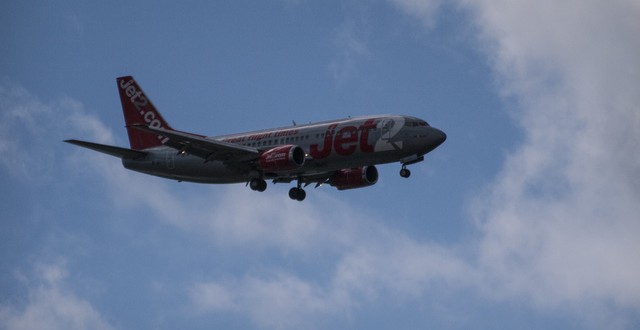According to numbers published by the World Tourism Organisation and covering international travel across the planet, 2013 sawged a total of 1.087 billion arrivals. The specialists expect these numbers to top 1.4 billion in 2020 and 1.8 billion in 20301.
With the plane providing the most common means of transport, the quantity of greenhouse gases emitted into the atmosphere is not only astronomical but also highly negative for the environment.
According to quarterly statistical bulletin numbers 17, 18, 19 and 20 of INAC2 (the Portuguese Institute of Civil Aviation), the country’s mainland airports registered 245,079 plane movements in 2013 with a total volume of 32,522,844 passengers. Hence, this reflects a daily average of 671 planes taking off and landing. Furthermore, according to ”Mastercard Global Destination Index 2013”, Portugal does not even make it into the top twenty world tourism destinations.
Air transport undoubtedly represents the primary cause mentioned whenever approaching the downsides of tourism in terms of the environment. After this come the other means of transport serving tourists over short or medium distance journeys in their vacation periods: coaches, car rental, taxis, ocean or river cruise liners and all of them polluting.
There are Portuguese researchers attempting to produce commercial airline biofuels out of micro-algae through a bio-refinery process as a means of cutting harmful emissions3. However, just when will these be ready to use and in sufficient quantities so as to make a difference? The new Airbus A-350, thanks to its carbon composite structure, is lighter and will enable fuel savings of around 25%. Unfortunately, the national flag carrier does not get its first plane until 2017. Car manufacturers are also advancing with less or even none polluting models. However, the cost of the latter and their restricted autonomy are – in the here and now – a restraint on their sustainable utilisation.
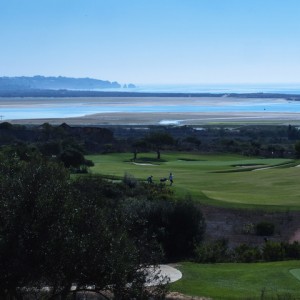
Another market segment identified for its harmful environmental impact are golf courses due to the quantity of irrigation waters and chemicals applied in their maintenance as well as the destruction of indigenous vegetation and deforestation of the fairways and their surroundings. This sector has also experienced major changes driving a reduction in both the maintenance costs and in the harmful impacts on nature. We went to Palmares1 (Lagos), where the maintenance director Joel Nunes and his assistant responsible for irrigation, Sérgio Guerreiro, both with backgrounds in agronomy, explained to us the changes brought about over the last five years to solve such problems. Of the 70 hectares, 20 are common land and ecological trails retaining the indigenous species such as fig, carob, almond and olive trees. We observed how this maximises recourse to water through a modern irrigation system with its satellite commanded sensors measuring the humidity of the soils and only delivering water to those areas actually in need. Furthermore, the reservoir lagoons enable the recycling of around 60% of all water used in addition to the rainfall that seeps into the land and the incorporation of Bermuda warm season grass fairways that require low levels of irrigation. More water demanding grasses make up only 5% of the irrigated area. For a 27-hole golf course, the estimated daily water requirements come in at around 250,000 litres, around half of what would have been needed for an 18-hole course 15 or 20 years ago. The main source of water is an agricultural dam, the Bravura, which also serves two other golf courses. In the words of Joel Nunes, this dam has experienced an excess of water in recent years. “Were it not for the golf courses and as there are no farmers taking advantage of it, this would have been wasted. At this moment, the golf courses are a major help because without them the water would be more expensive to farmers and there wouldn’t be the funds to repair and maintain the channels”.
The fertilisers are dissolved in a special tank and then added to the irrigation system according to an IT system that spots the needs in effect through recourse to the satellite system and thereby avoiding all excesses.
Unfortunately, they remain dependent on electricity from the national grid. The two managers explain that their consumption levels are too high to be produced by alternative energy systems. However, they do attempt to rationalise consumption and avoid watering in peak periods.
When asked whether other golf courses were also adapting their policies to become more environment friendly, Joel Nunes did not hesitate: “I think so and for a simple reason: there’s no money around. And all of that excess water and excess energy just costs more money”.
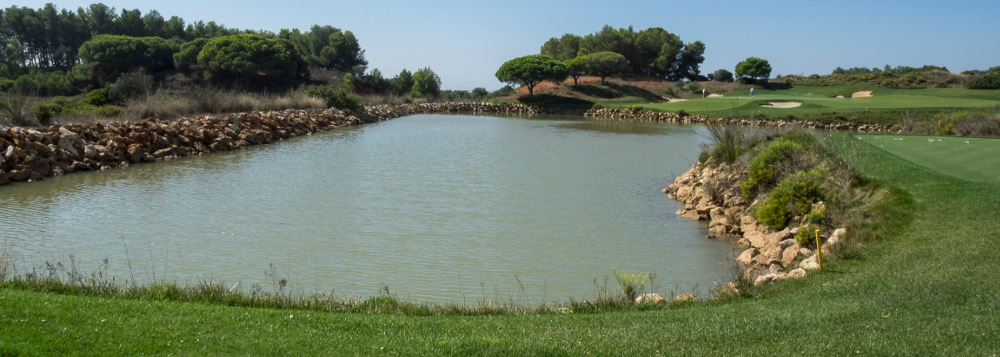
Observing the state of the agricultural lands, abandoned, we do become forced to ask whether the areas that now host golf courses would not be the same, unproductive and susceptible to fires. And we may also consider whether their locating in amongst forested areas might not create a fire break and thus avoiding the mass destruction of forests and homes. The ruling class has set the idea aside on the grounds of the high maintenance costs. Are they truly greater than those caused by the destruction of assets and the risk posed to human life currently caused by forest fires?
In the hotel units, there are countless practices that go unnoticed to the majority of people that when added up accumulatively, and with millions of tourists each and every day, play an overwhelming role in the ecological system of our planet. These are not daily habits, what happens outside of holidays but rather stem from the kind of thinking “well, I paid for it; I have a right to…”.
Some of these were past legal impositions and maintained out of habit even when no longer a legislative requirement. Examples include the changing of bed sheeting and towels in hotels. Even in 1995 Portuguese legislation forced their changing every two days. In four and five star establishments, this obligation was daily in nature. Whilst the letter of the law got changed in 1997 to state that «laundry should be changed at least once per week and whenever there is a change in clients», many guests have not given up on the daily change and hence the bill for such practices adds up in terms of the consumption of water and energy for the washing, drying and ironing and in addition to the detergents used.
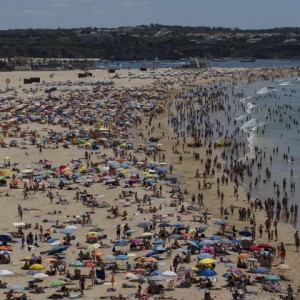
Showers are another source of resource losses. While at home we might turn the tap off while soaping ourselves, many people leave the water flowing when in hotels right from beginning to ending their showers. Tests carried out a couple of years ago show that the quantity of water used rose from around 20 litres to 80 litres per shower and hence quadrupling1. And, furthermore, even in the peak of summer, most people stuck to hot water with the corresponding energy expense. Leaving the water running the entire time whilst brushing one’s teeth or shaving proved another source of waste.
The poor usage of individual air conditioning units poses another problem to hotel units. Besides getting left turned on for hours on end without anybody even in the room, there is the additional factor that on countless occasions doorways are left open to balconies and thereby allowing for the circulation of air. However, the warm air coming in from outside forces the air conditioning unit to work constantly at maximum capacity. Only the installation of pressure sensors on the doors to balconies and windows can stop this unnecessary wastage.
As regards the poor usage of lighting, professionals in the sector make recurrent references to the enormous percentage of rooms in which the bathroom light gets permanently left on even when nobody is in there or even in the room adjoining. And this, carried out by the same people who so carefully always turn off lights in their own homes. And many clients know the tricks and take great pride in evading the card-key system that turns off the main switch in the room whenever nobody is there.
Many hotel chains have already held awareness raising campaigns with their clients taking into consideration above all the economic reasons even while also making recourse to more appealing ecological grounds. However, the results, even while beginning to appear, remain far from spectacular.
Attentive observation and chatting with chefs and waiters at various different hotel units revealed an overall estimate of about 15% as an estimate of daily food wastage and with all the subsequent environmental effects: more energy and water consumed in food preparation, more washing up (greater consumption of water, energy and detergents), the increase in rubbish and oils needing processing, etcetera.
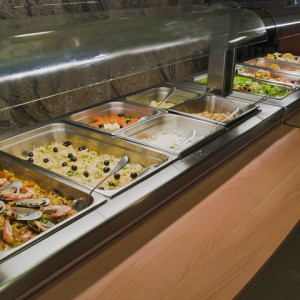
The buffet system particularly fosters waste as «the eyes eat more than the belly» and people pile up their plates and then leave half of it behind as well as in the meanwhile fetching different things that they do not consume in their entirety in the anxiety to try everything. And there’s no difference between the «white collar workers» from their «blue» counterparts when it comes to tucking into a well stocked buffet.
Hotel management has recently opted to use smaller containers in buffets as a means of psychologically checking the desires of clients at the point of serving foodstuffs. Furthermore, according to what they told ECO123, this works. However, when it comes to the end of dining, employees, whether out of laziness or the complexity of food safety norms or whatever the reason, do not make use of anything already served up on the buffet line despite its perfect condition. Instead, they simply take up rubbish bags and tip the leftovers away.
In current times, there are humanitarian organisations willing to collect these leftovers in order to feed those in need. Nevertheless, there is still a great deal of ground to be covered in stopping good food entering hotel bins for the most various regrettable of reasons.
If we take the period prior to the Algarve’s touristic development, we see that its economy basically depended on dried fruits, fishing and fish canning. Both were impacted by tourism that not only robbed their labour force but went further. In agriculture, the smallholdings system never enabled farming to get beyond a subsistence activity. Meanwhile, the trends contemporarily observed head in the same direction. Farming may be a means of seeing off hunger or helping in stretch out household budgets but it proves difficult to conceive of it as an alternative to tourism activities in economic and labour terms.
At sea and in its related industries, matters were once different: they employed a lot people but have since gone out of business. What were the reasons? Joaquim de Mendonça Lopes, then president of the Barlavento Algarvio Fish Canning Industrial Association1, in 1966, and regarding the previous year, attributed the “flight of women to tourism related activities to a 20% increase in labour costs”. More specifically, the cost of labour employed by factories rose by 73.58% between 1962 and 19662.
Nevertheless, tourism did prove a means of avoiding unemployment and poverty when the sardines landed in Portimão dropped from 13,639 tons in 1960 to 4,149 tons in 1969 due to downturns in fishing stocks. Furthermore, the same period saw the average price of a kilo of sardines increase from 3$42 to 7$203.
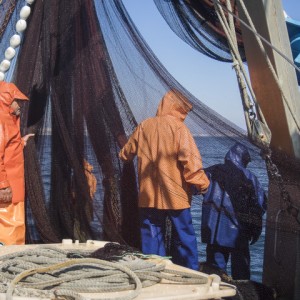
Indeed, there is now the belief that the future of the Algarve does involve the sea and the riches it contains with current exploration timidly beginning to show some of the paths towards the future. The WindFloat project, an offshore wind energy project built entirely in Portugal, is a pioneer in its field and has already stood up to 17 metre high waves. However, we also need to take into account how some solutions, such as offshore aquiculture, may end up causing environmental damage. Then again, are there any human activities that do not have some effect on nature?
In conclusion, ECO123 would suggest reading the book «Portugal e o Mar»4 by Tiago Pitta e Cunha – Fundação Francisco Manuel dos Santos (FFMS) to grasp some of the options that might get explored in the Algarve as an alternative – or complement – to tourism.
ECO123 contacted Dr. Victor Guerreiro, president of ACRAL – the Association of Algarve Retailers with two questions:

ECO123:Supposing the Algarve tourism industry experiences some sudden future fall, are there concrete studies on alternative scenarios that might offset the economic problems and unemployment that such a situation would generate?
“The fulcral question for the Algarve does not involve studying alternative solutions for a casuistically negative situation in the tourism sector that would prove difficult to overcome even with emergency measures.
What matters is knowing how to structure the economy into the medium and long term in a means able to cope with tourism fluctuations. Knowing how lead the Algarve away from the path trodden throughout decades of dependence on the mono-economy of tourism.
The problem of this over-dependence on tourism has long since been identified, a sector where supply may prove very volatile and subject to sharp contractions triggered by externalities, such as problems with public security, health and disasters.
This response rests on the diversification of key areas of the regional economy. This does not mean nurturing sectors with the objective of ensuring their weighting matches the tourism sector, which would be difficult, but rather strengthening other areas of the economy so that they may smoothen out any contraction in the tourism sector.
This strategy should incorporate intelligent specialisation, investment and innovation but above all doing well in those sectors where we already have intrinsic capacities.
This is the preferential solution for responding to the problem, boosting the traditional sector and reinventing the flavours, adding know-how, technology and quality to the production process to boost the chain of value and fostering the conditions necessary to remaining in the region and contributing to the gross regional added value.
Much has been done in recent years but there is a still a lot more to do.
The Algarve business community across all of its generations should recognise how much has evolved in attempts to bring about real diversification in the regional capacity to generate wealth even if not yet enough.
The region lacked and lacks an integrated strategic vision, capacity and rigour in evaluating the results returned and their effective multiplier effects to a large extent due to the lack of regional structures, especially in the private and associative sectors, able to undertake this task of analysing and forecasting the evolving trends in the economic structure.
We still need to unite the Algarve’s citizens and establish structures able to think for the long term and representing the region in decision making forums with due weight and an effective voice.
The response to any crisis in tourism essentially involves work carried out in the medium and long term to endow the Algarve with all of the capacities to meet challenges emerging at any moment and without recourse to casuistic and incidental answers because the economy does not grow by decree nor do crises tell us when they’re on their way.
This is not about surviving a tourism sector crisis, this is about running a regional economy that does not break up when faced with crisis in any sector, which withstands all such scenarios.
This is the challenge that we still have to overcome, this is the economy for the Algarve that would prove determinant but which we insist on pretending we do not have to build.
The studies are done, the conclusions are reached but there lacks the awareness in substantive terms, which means we need to move on from finishing sentences to getting on with actions.
ECO123: Esse novo figurino, e em comparação com a indústria turística que temos, seria mais ou menos nefasto para o ambiente?
As regards the environmental impact, we may today reduce the negative impacts of every model of economic development. On this subject, what needs highlighting is the close control required over the economic choices made in relation to their environmental effects.
The economy is not and nor does it have to be an enemy to the environment. What matters is less the a priori legal prohibitions on investment, on the hypothetical grounds of safeguarding the environment but rather on compliance with the core principle that respect for the environment is a pre-condition for sustainability”.
In summary, there is no concrete solution available to the possible problem but there are many paths to be trodden in order to offset the impact.
www.inac.pt/vPT/Generico/Paginas/Homepage00.aspx
www.lneg.pt/divulgacao/noticias-institucionais/188
www.airbus.com/newsevents/news-events-single/detail/airbus-a350-900-receives-faa-type-certification
www.publico.pt/economia/noticia/o-novo-airbus-a350-ja-voa-1597336
www.skyscrapercity.com/showthread.php?t=551932
www.onyriapalmares.com/pt/Onyria-Palmares-Beach-Golf-Resort.aspx
www.sea4us.pt
www.principlepowerinc.com/products/windfloat.html
www.cpa1835.com/pt
www.ffms.pt/ensaio/38/portugal-e-o-mar
Regulatory Decree 36/97, de 25 de Setembro, Secção II, Artº 22º
O Tratado de hotelaria, de Manuel Ai Quintas, INFT, pág. 39, mostra os consumos médios de água, nos hotéis.
Magazine «Conservas de Peixe», nº 253, Abril de 1967
Magazine «Conservas de Peixe», nº 289, de Abril de 1970
 Eco123 Revista da Economia e Ecologia
Eco123 Revista da Economia e Ecologia

